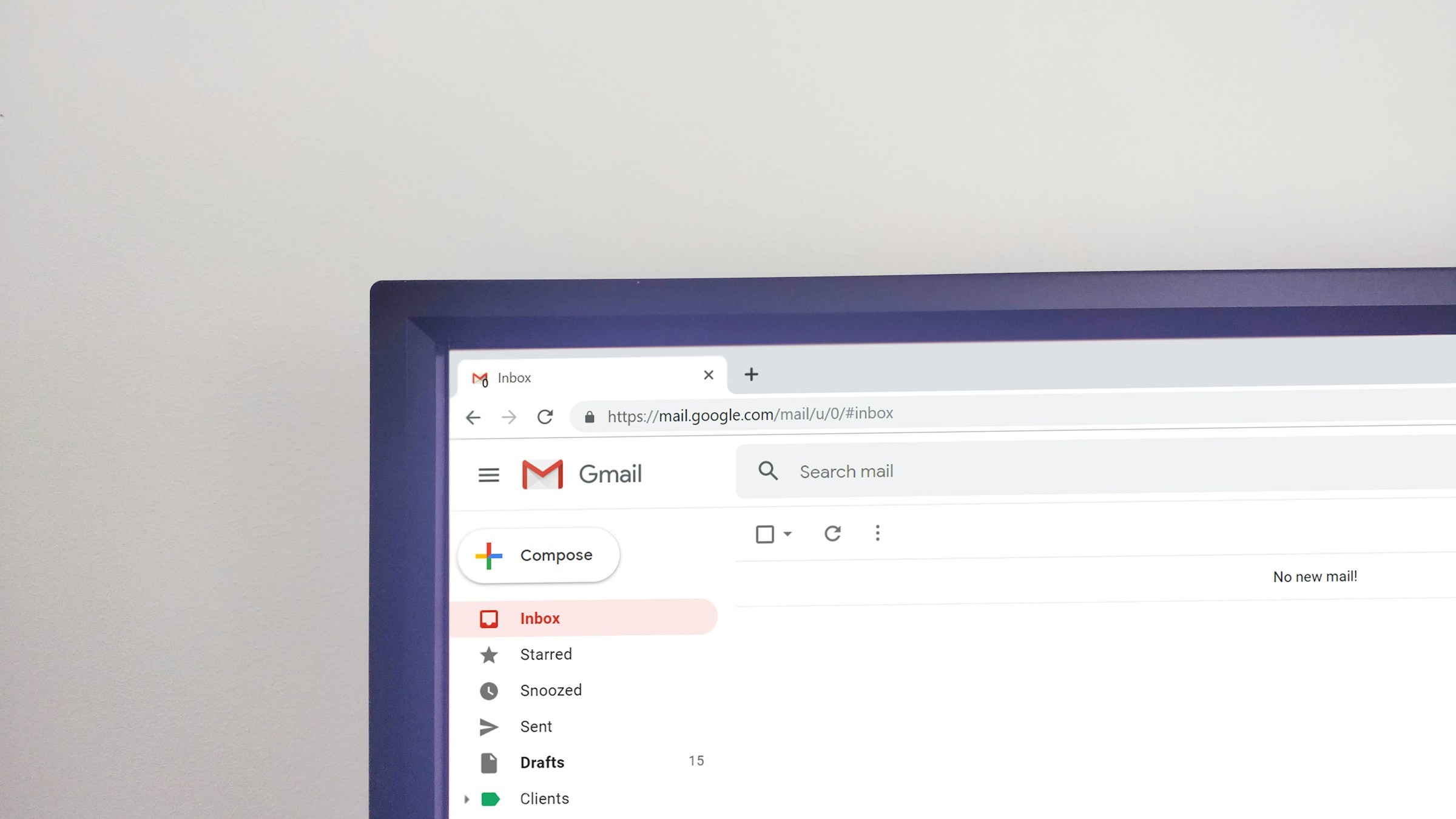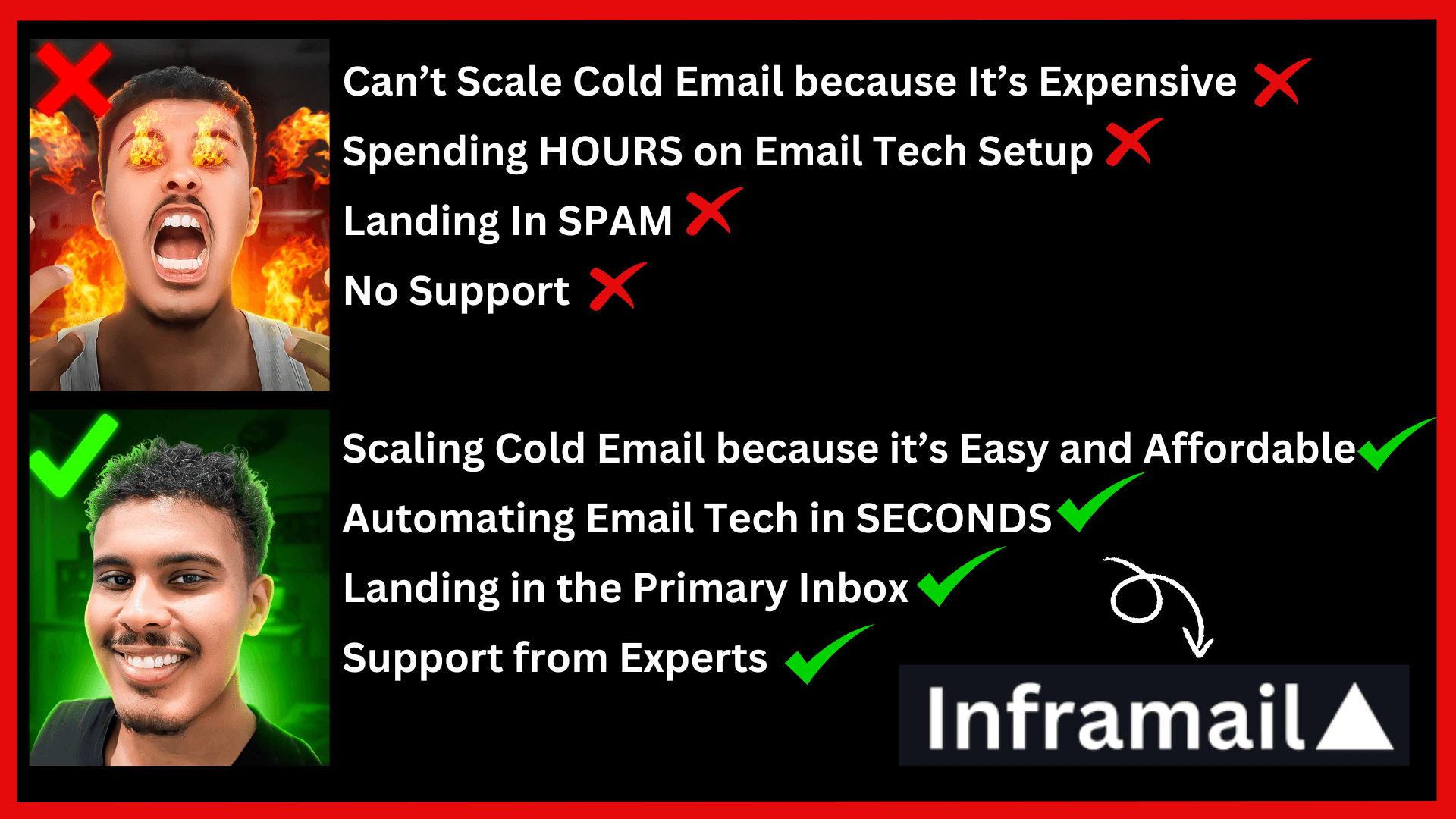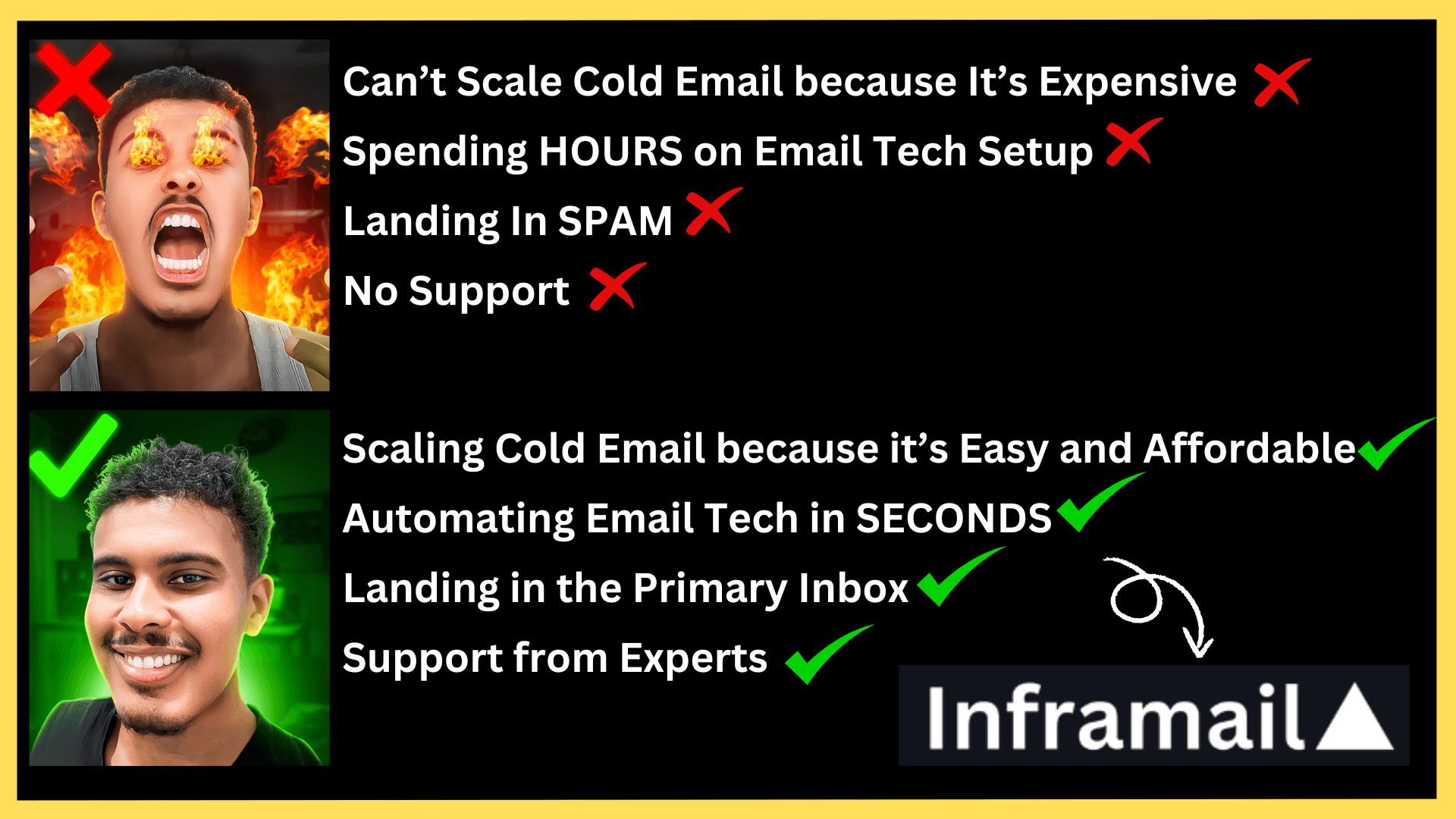Mar 5, 2025
Why Does Email Deliverability Matter?

Ensure Your Message is Seen: Get Your Emails Out of Spam Jail
They won’t see your message if your emails don’t reach the intended recipients’ inboxes. High deliverability ensures your emails are getting in front of your audience.
Protect Your Sender Reputation: Avoid the Spam Folder
Email deliverability is closely tied to your sender’s reputation. If too many of your emails bounce or are marked as spam, email providers may block your messages, reducing your ability to reach my audience.
Maximize Engagement: Put Your Emails Where They Belong — the Inbox!
When your emails consistently land in the inbox, recipients are likelier to open, read, and interact with them. High engagement leads to better customer relationships, higher conversions, and increased revenue.
Improve Return on Investment (ROI): Get the Most out of Your Email Marketing
Email marketing has one of the highest ROIs among digital marketing channels. Poor deliverability means:
Missed opportunities
Wasted resources
Lower ROI
Ensuring high deliverability maximizes the return on your email marketing investment.
Build Trust and Credibility: Earn Your Readers’ Trust
Consistently delivering emails to the inbox builds trust with your audience and email service providers. This trust leads to better engagement rates and reduces the chances of your emails being flagged as spam.
Reduce Costs: Stop Wasting Money on Undelivered Emails
Sending emails that don’t reach the inbox is ineffective and costly. Improving deliverability ensures your marketing budget is used efficiently, reducing wasted spend on undelivered emails.
Comply with Regulations: Avoid Potential Legal Issues
Maintaining good deliverability often involves following best practices that comply with email marketing regulations like GDPR and CAN-SPAM. Compliance helps you avoid legal issues and potential fines.

Related Reading
• Automated Lead Generation
• Email Prospecting
• How to Generate B2B Leads
• How to Warm Up Email Domain
• How Many Emails Can You Send Before Considered Spam
• Best Time to Send Cold Emails
• How to Cold Email
• Best Cold Email Templates B2B
• Email Outreach Best Practices
• Email Outreach Strategy
How Do Email Providers Determine Deliverability?

Email providers consider many factors before determining if a message is spam or if it comes from an address that sends spam messages regularly. Here are the things to watch out for to keep your email address off of spam and block lists.
Sender Score and Reputation: Your Email’s Lifeline
Email providers use your sender score and reputation to determine if your emails should be delivered or blocked. This score combines the number of spam complaints your campaign mailings have received, the number of unknown and inactive subscribers on your list, and whether your domain is on a block list. The lower your score, the more likely your campaign will be blocked by mail providers and marked as spam. One way to increase email deliverability is to use a free email validation tool that lets you know in advance if you’ll run into problems.
Content: What Are You Trying to Tell Me?
Email providers use spam filters to find content that goes against their policies and terms of service. These filters look for:
Words found in spam messages
Poorly written headers
Large attachments
When planning the content for your campaign, choose your words carefully and make the subject line appealing to your subscribers.
Bounce Rate: Are You Sending Emails to Real People?
Another way your address can be labeled as spam is if too many of your messages are addressed to an invalid address. A high bounce rate tells a provider that messages are being sent to people who have not agreed to be on your list. It also indicates that a campaign list isn’t being updated. To ensure you’re only sending to valid addresses, use an email bounce checker to determine which addresses in your list can be delivered to an existing inbox.
Open Rate: Do People Care About Your Emails?
Email providers also know whether their users open messages delivered to their accounts, whether any links are clicked, and whether the recipient replies. If your list subscribers don’t open your messages, your campaign’s address may be spam. If your messages go unopened, ensure you send information your subscribers want.
Domain Reputation: What Happens If Someone Spoofs Your Address?
Spoofing your campaign’s email address affects your sender’s reputation. Even though the spoofed mail didn’t come from your account, your subscribers will be tricked into thinking the spoofed mail is legitimate. After a hacker has fooled your subscribers, they’re less likely to open future mailings from you.
Related Reading
• Best Cold Email Software
• How Long Should a Cold Email Be
• B2B Cold Email Response Rates
• Unlimited Email Hosting
• Email Testing Tools
• Best Email Deliverability Tools
• Sales Email Automation Tools
• Email Scraping Tools
• Best Sales Prospecting Tools
• Email Warm Up Tools
• Email Personalization Tools
• Mailscale Alternatives
• Mailforge Alternatives
How to Improve Email Deliverability

Building the Right Reputation
ISPs care a lot about the credibility of your domain and IP address. Before any email is delivered, they’ll run a so-called ‘reputation check’. The aim is to determine whether you will likely send unwanted messages or have nefarious motives. If it is determined that you do, your deliverability will suffer. To avoid such a fate, focus on building an exemplary reputation from your first campaign:
Send Emails Only to Users Who Want to Receive Them
While buying mailing lists is an obvious no-no, you should also be careful about emailing people without explicit permission. Just because someone joined one of your events a few years back or signed up on your forums in 2010 doesn’t mean they will appreciate being notified about your new product launch. If they don’t, they will likely mark your message as spam to get it out of their inbox. Even a few such requests are enough to significantly harm the reputation of your domain and get you blocked on future campaigns, no matter the DNS server you use. Try to resist the temptation of contacting random accounts who MIGHT be interested in what you have to say (but likely are not).
Use a Reputable Email Service Provider (ESP)
Choosing a reputable Email Service Provider (ESP) is foundational for improving your email deliverability. An ESP is a company that helps businesses send and manage their email campaigns, and selecting a well-regarded provider can significantly impact your deliverability rates.
Why Does a Reputable ESP Matter?
A reputable ESP has established relationships with major Internet Service Providers (ISPs) and adheres to best practices for email sending. These relationships help ensure that your emails are more likely to be delivered to the inbox rather than marked as spam. Reputable ESPs also provide tools and features to enhance deliverability, such as domain authentication, bounce management, and spam filter testing.
Tips for Choosing and Using a Reputable ESP
Selecting a reputable ESP and leveraging its features can significantly enhance your email deliverability, ensuring your messages reach your audience and achieve your marketing goals.
Check Deliverability Rates: Leading ESPs often publish their deliverability rates. Look for an ESP with a high deliverability rate, ideally above 95%. This metric reflects how successfully the ESP can get emails into recipients’ inboxes.
Verify Compliance and Accreditation: Reputable ESPs comply with industry standards and regulations, such as CAN-SPAM, GDPR, and CASL. They also participate in accreditation programs like the Return Path Certification, which indicates adherence to best practices and high deliverability standards.
Utilize Advanced Features: Choose an ESP that offers advanced deliverability features, such as automated list cleaning, A/B testing, and comprehensive analytics. These tools help maintain a clean email list, optimize campaigns, and monitor deliverability issues.
Seek Strong Customer Support: Opt for an ESP with responsive customer support. Practical support can quickly address any deliverability issues, provide guidance on best practices, and offer solutions to your specific needs.
Warm Up Your IP and Domain
Warming them up when using a new IP address or domain to send email campaigns is critical. Warming up an IP or domain means gradually increasing the volume of emails sent from that IP or domain to build a positive reputation with Internet Service Providers (ISPs). Start by sending emails to your most active and engaged users. Their high interaction rates (e.g., opens and clicks) help demonstrate the legitimacy and relevance of your emails. Over several days or weeks, incrementally increase the number of emails you send.
Best Practices for IP and Domain Warm-Up to Maximize Email Deliverability
Following a structured warm-up plan can minimize the risk of deliverability issues and ensure that your IP starts with a strong reputation.
Note: While IP warm-up focuses on sending IP addresses, domain warm-up is a separate but related process used to build the reputation of a new or inactive domain. How does it increase email deliverability? Gradually building a new IP address’s reputation helps establish trust with ISPs, preventing them from flagging bulk emails as suspicious. Sending emails initially to highly engaged users signals positive activity to ISPs, which enhances the IP's reputation and improves deliverability.
Make It Easy to Unsubscribe
This might sound counterintuitive. After all, you’ve been working hard to gather your mailing list, so why would you let it go so quickly now? You’re probably also subscribed to some mailing lists (voluntarily or not) but hardly ever open their emails. It could be that I signed up to access some e-book or tried a product years ago but don’t care about it anymore. Or maybe I was genuinely interested in some blog, but for whatever reason, I just can’t be bothered anymore.
The Impact of Inactive Subscribers on Email Deliverability and Reputation
Hundreds of such people are on your list; if they don’t interact with you now, it won’t help your cause. If you make it hard for them to remove themselves from the list, sooner or later, they’ll want to clean the mailbox by hitting the ‘spam’ button and quitting anyway. What’s more, ISPs also look at whether people interact with your emails when assessing your reputation. If they never open them, it won’t help your cause.
The Benefits of an Email Preference Center for Subscriber Retention
Remember that people may not want to unsubscribe from all your communication. Chances are they’re just receiving too many emails or are more interested in a different area you also cover with your content. Consider setting up a simple ‘preference center’ where users can decide what they wish to receive and how often they want to receive it. Everyone likes being in control; some will stay with you longer if you give them that option.
Bounce Rate: Hard Bounce and Soft Bounce
Letting people unsubscribe easily is not enough. You should also remove some contacts on your own. Believe it or not, list hygiene makes a lot of sense. After all, who needs inactive subscribers?The obvious case is bounced emails:
Hard bounce: An email failed to be delivered due to a permanent issue (e.g., the wrong email address), and the server will not make further attempts to complete delivery.
Soft bounce: An email failed to be delivered due to temporary issues (e.g., a full mailbox), and the server will make more attempts to complete delivery.
The Importance of List Hygiene for Better Email Engagement
If your mailing software doesn’t automatically remove accounts, which results in a hard bounce, do it manually. Nearly any mass email program, such as MailChimp or SendGrid, offers detailed stats for your campaigns and accounts. You can quickly check who opened your emails and clicked on the links and how often they did so. This lets you quickly determine who hasn’t been active for ages and is just decreasing the quality of your list. Remove such users now and then and focus only on those who appreciate your content.
Re-Engagement Emails: A Win-Win Strategy for List Optimization
Here’s a tip: Some companies send inactive users an email saying, “Hey. We’ve noticed you didn’t open any of our recent emails. Should we not bother you anymore?”. What are the two most likely outcomes of such a message? The user unsubscribes, which improves the quality of your list. The user stays on the list and starts interacting with your content. You win in both situations. It could also be that these people don’t open your emails because they’re not receiving them in the first place.
Follow a Consistent Schedule
Both users and ISPs appreciate companies that send emails on a regular schedule. Users are also more likely to open and interact with emails on a regular schedule, for example, every Tuesday afternoon. If you send one email per your weekly schedule but suddenly switch to three, it sounds suspicious to the email provider. Resist the temptation of letting everyone know right away about a brand-new product. Instead, integrate such a message into your existing campaigns.
Optimizing Email Send Times for Maximum Engagement and Conversion
Another reason to send emails at the right time is to increase conversion and improve your reputation. That 10-11 AM period on Tuesday sounds like a good start. Many email tools let you send emails in the user’s time zone at a specific time. This is necessary if you have a distributed list from different time zones.
Avoid Spam Traps and Blacklists
Spam traps are fake email accounts set up by ISPs and placed in various locations around the web. While harvesting emails, bots also tend to add these addresses to their collections as they look no different than the real accounts bots are after. Email such an account, and your deliverability will immediately suffer. Those making such foolish mistakes and many other spammers end up added to multiple blacklists by various algorithms in place.
Avoiding Blacklist Penalties: How to Protect Your Email Reputation
Many email service providers (ESP) such as Gmail, Outlook, or Yahoo Mail, before delivering an incoming email, check against those blacklists and decline emails if they find enough reason to consider someone a spammer. You don’t want to be on the “naughty lists” that ESPs generate. MX Toolbox has a free tool for checking if your domain already ended up on one of the blacklists.
Selecting the Right Infrastructure
Let’s look at a more technical aspect of delivering your emails to inboxes. Spambots, in an attempt to get users to open their emails, are known to try to impersonate real people or organizations. A phishing email sent from jon.snow@unicef.com with a request for donations is much more likely to bring $$$ than the same email sent from jonsnow2487273@gmail.com. To prevent that, ISPs implement several email authentication techniques to ensure the email originator is actual. It’s pretty easy to pass them if you’re a legitimate email sender, so invest some time into this.
Authentication with DKIM
DKIM stands for DomainKeys Identified Mail and is used for email validation. It checks if the owner of a given email address indeed sent a given email message. It’s a digital signature that’s sent with every email message. It includes encrypted details such as message body or/and headers, sender’s domain, and others.
The Role of DKIM in Email Authentication and Deliverability
When an incoming server receives an email with DKIM, it recreates the signature with a public key and compares it against the DKIM received. If there’s a match, the email will significantly boost deliverability. If it fails, the receiving server will be notified that the sender might not be who he/she claims to be. If DKIM is missing, it might not disqualify a message but will affect its deliverability.
Authenticate with SPF
SPF (Sender Policy Framework) is another crucial authentication method. Unlike DKIM, it doesn’t include information about the domain or address from which an email is sent. SPF records, however, tell an incoming server which hosts (or IP addresses) are allowed to send emails with a given email address. Before an email appears in a mailbox, an incoming server quickly checks. If things don’t match, an email might be rejected immediately.
Which One Should I Use: DKIM or SPF?
Both. While they might seem like competing services, they’re best used simultaneously. DKIM cannot verify who sent a message, and SPF does it well. On the other hand, SPF doesn’t include any body and headers’ verification, but that’s what DKIM was made for. Using both makes it reasonably straightforward to incoming servers that your emails are legit and you are who you claim you are.
Authenticate with DMARC
When you thought you were done with authentications, DMARC appeared on the horizon—and rightly so. DMARC is the most sophisticated of the three methods because it leverages DKIM and SPF and adds an extra check (known as an ‘alignment test’). DMARC also allows you to tell a receiving server what to do if an email fails the test. Such messages can be discarded immediately, sent to a quarantine (usually a spam folder), or treated as usual.
Enhancing Email Security with DMARC, SPF, and DKIM
For each test failed, a sender might receive a report detailing what happened, providing a first-hand source of knowledge if any spoofing occurs or a legit email fails a test. DMARC requires at least one of the previous two methods to be implemented. It certainly won’t hurt to set all three up for better credibility and protection from cybercriminals.
Rely on Double Opt-In
Another thing worth setting up for any email campaign you plan to send is a double opt-in. Typically, this means that after a user signs up to receive your emails, they must go to their inbox and confirm the intent. Adding plain functionality doesn’t affect your deliverability, but it can affect the quality of your:
Mailing list
Bounce rate
Spam reports
While it might be tempting to automatically subscribe people to a newsletter when they register for an event or open an account, you’ll get better results in the long term if you explicitly ask them for consent. Doing so also keeps you compliant with the law.
Check Feedback Loops (and Make Use of Them)
Nearly all significant ISPs give you access to feedback loops. These are not secret channels that users use to provide valuable feedback about your product. These simple surveys, which users are asked to fill out when they unsubscribe from a mailing list, can provide useful data. Users complain about getting too many emails. Try decreasing your volume a little bit. They claim they never signed up to be on your email list in the first place. Double-check if you’re sending your campaign to the right audience.
Decide Between Shared and Dedicated IP Addresses for Sending
Remember, your IP address also impacts the sender’s reputation associated with each of your emails. Platforms for sending several emails at once offer shared IPs by default, which are used by hundreds or thousands of their clients. This keeps the service cost low but doesn’t give you any control over your IP reputation. The operators do their fair share of quality control and rotate with hundreds of IP addresses to ensure good deliverability for their clients. For nearly everyone, a shared IP will be perfectly sufficient.
The Importance of Gradual Email Warm-up with a Dedicated IP
If you already have hundreds of thousands of contacts on your lists and need to reach out to them regularly, consider investing in a dedicated IP. This will give you complete control over your sending reputation. It’s essential not to email the entire list on day 1. Receiving servers need to be taught first who you are and that what you send is legit and desired by your audience. Companies typically start by sending small batches of emails to some of their contacts and, step by step, increasing the volume.
Crafting Accurate Content
Now, let’s discuss increasing email deliverability when creating actual campaigns.
Use Branding and Personalize ‘From’ Field
We mentioned earlier that one factor impacting the sender’s reputation is whether users interact with the email content. One time-tested method to increase the open rate is to include both your company and sender names. “John from Mailtrap” will likely have much more success with our mailing list than “John Smith” or, worse, “johnsmith48782.”
Balancing Personalization and Professionalism in Email Campaigns
The company name adds credibility and a familiar feel. In contrast, a person’s name makes it sound like it’s not just the marketing team sending a new campaign but a regular person behind it. Always have a short, informative text in the subject line that doesn’t come off as clickbait. Of course, you don’t always need the CEO to compose and send each email with perfect formatting, especially if you send onboarding messages to thousands of users; it’s virtually impossible. It’s standard to receive an email from a CEO, respond to it, and connect with the support team and people are okay with that!
Send a Welcome Message
After someone signs up for your mailing lists or registers for a trial account, tell them what they should expect from you. Send them a personal ‘thank you’ for trusting you with their time and let them know what’s coming up: When will you contact them? What are you going to write to them about and why? Give them a choice and something to start with. Emails like this are an easy way to quickly start a relationship with a reader, gain their trust, and let them know they’re in charge.
Optimize Your Content to Pass Spam Filters
Spam filters assess your email's content, structure, and metadata to determine whether your message is spam. They look for typical signs such as overly promotional language, excessive use of special characters, and unusual formatting, which are often associated with unsolicited emails or scams. For example, phrases like “Claim your discount NOW!” or “100% FREE” tend to raise red flags for spam filters.
Practices to Avoid
Spam trigger words:
Claim your discount NOW!
Act immediately.
Jackpot
100% FREE
For only XXX amount
Formatting issues: Avoid excessive use of special characters like !, $, or >, primarily in subject lines. Refrain from writing in ALL CAPS, as it can appear aggressive and unprofessional. Avoid using exaggerated symbols or numbers such as:
777
$$$
0% risk
Best Practices
Use clear, concise, and professional language. Avoid deceptive tactics or overly promotional terms. Ensure your emails are well-structured and have proper HTML formatting.
How it increases email deliverability:
Spam filters use advanced algorithms and heuristics to evaluate email content, looking for patterns and keywords typically linked to spam or fraudulent messages. By steering clear of these “spammy” words and practices, your emails are more likely to pass through these filters and reach the recipient’s inbox, improving your deliverability.
Send Relevant Content
People signed up to your list for a reason, and hearing about the great deals for your product wasn’t probably one of them. Don’t misuse their trust. Don’t turn it into a sales channel if you promised to send tips and tricks on using your product. If your users signed up to receive my latest blog posts, they will expect to receive them in every HTML email I send. If I fail to deliver on a promise, they’ll either leave (bad news) or mark me as a spammer (worse news).
Maintaining Balance Between Value and Promotion in Email Content
Of course, I might mention a deal or related product now and then, but keep it to a minimum. The 80/20 rule applies well here as well. Keep 80% of the content for the relevant stuff and the other 20% for the content more related to my business goals. This can mean that one out of five emails is a bit ‘off topic,’ but probably a better choice would be a small section in most emails with a gentle CTA to buy my product/service. Either way, test your feedback loops to see if such messages resonate with the audience.
Segment the Email List
Don’t just email all your contacts; I hope there will be some interest. Segment users based on their interests, the types of features they use, and the content they interacted with. The better you understand your audience and the more relevant content you send, the better reception you’ll have at the end of the day. Use analytical tools like Mixpanel to see how users navigate your platform and apps. This will give you tons of data on their interests and allow you to adjust your content accordingly if you run several blogs or have multiple content strategies—target content to specific groups rather than all your contacts at once. A bit of effort can yield some nice results.
Don’t Use No-Reply Emails
No matter the company’s size and mailing list, you want to hear back from users. The information can be very valuable, whether with questions about a product, complaints about too many emails, or feedback/feature requests. While not significant, ISPs also favor those who send emails and accept responses with legitimate addresses.
Proactively Monitor Blacklists
If your IP or domain gets blacklisted, it can severely impact your email deliverability. To prevent this, implement a robust monitoring system to keep a check if my IP or domain gets blacklisted. Automated tools and alerts can notify you immediately if your IP or domain is flagged, allowing you to take swift corrective action. For instance, Mailmodo provides automated reports to identify sender reputation issues. It also guides users through the process of resolving blacklist incidents by contacting blacklisting services and addressing the underlying problems, such as spam complaints or invalid email lists.
Proactive Steps to Ensure Email Deliverability: Monitoring and Managing Blacklist Status
How does it increase email deliverability: Monitoring blacklists allows you to check if your domain or IP has been blacklisted. This enables you to take proactive steps, such as contacting the authorities to get your IP or domain whitelisted, thereby maintaining trust with mailbox providers and improving email deliverability.
Never Use Purchased Email Lists
Buying email lists is the easiest way to get leads. Purchased email lists often contain unverified, outdated, or uninterested recipients. Sending emails to such lists results in high bounce rates, low engagement, and increased spam complaints. This damages your sender reputation and reduces deliverability. Using purchased lists violates data protection laws, exposing you to potential legal penalties. Without consent from recipients, all your emails are technically spam.
Legal and Reputational Implications
Using purchased email lists can lead to non-compliance with strict regulations, such as:
General data protection regulation (GDPR): This regulation requires explicit recipient consent for email communications. Violating this can result in substantial fines and legal action.
CAN-SPAM Act (USA): Prohibits sending commercial emails to recipients without prior permission and imposes penalties for non-compliance.
Canadian anti-spam legislation (CASL): Requires consent for sending commercial emails and mandates proper email list management.
Best Practices for Building an Organic Email List
How does it increase email deliverability: When you’re not purchasing an email list and building it from scratch instead, your list consists of people who are genuinely interested in what you have to offer. This translates to your emails getting more engagement, which signals to the ISPs that my emails are relevant, and they make sure that my emails reach the recipients. So, be a good email marketer and create your email list using proper practices. Focus on building an organic email list using ethical practices, such as:
Offering valuable resources (e.g., guides, ebooks) in exchange for email sign-ups.
Use website forms to capture genuine interest.
Encouraging referrals from existing subscribers.
Clean Your Lists Regularly
Introducing a welcome email series is one of the best ways to ensure a clean and active email list. This series engages new subscribers from the start and is an effective email validation tool. When subscribers interact with the welcome emails, it confirms their email addresses are valid and active. If an email bounces, it’s essential to promptly filter it out or add it to my suppression list to avoid repeated delivery attempts to invalid addresses. Over time, some subscribers may stop engaging with your emails, or their email addresses might change due to job transitions or other external factors. Periodically cleaning your email list and removing inactive or invalid email addresses is critical for maintaining a healthy deliverability rate.
The Long-Term Benefits of Email List Hygiene for Deliverability and Engagement
Here are a few best practices to maintain email list hygiene:
Remove invalid and bounced emails: Regularly identify and delete hard-bounced email addresses from your list. Maintain a suppression list: Include users who have unsubscribed, become inactive, or stopped engaging with your emails. Implement a sunset policy: Define criteria to phase out inactive users and ensure my list remains involved and relevant.
How does it increase email deliverability: Regularly cleaning your email lists ensures you’re sending emails to engaged, active subscribers, reducing bounce rates and the likelihood of spam complaints. You increase engagement rates by targeting subscribers genuinely interested in your content, such as opens and clicks.
Higher engagement signals to Internet Service Providers (ISPs) that my emails are relevant and trustworthy, improving the chances of my emails landing in the recipients' inboxes instead of being marked as spam.
Monitor Performance Metrics Regularly and Fix Issues
Monitor key email metrics regularly, such as:
Open rates
Click-through rates (CTR)
Bounce rates
Unsubscribe rates
Spam complaints
Conversion rates
How does it increase email deliverability:
By measuring key metrics, you can identify which campaigns are performing well and intensify those strategies while discontinuing or optimizing the ones that aren't working.
Regularly analyzing campaign performance allows you to refine content, timing, and targeting for better engagement.
Higher engagement—such as increased open and click-through rates—signals to Internet Service Providers (ISPs) that my emails are valuable and relevant, leading to improved deliverability.

Related Reading
• Sendgrid Alternatives
• Amazon SES Alternatives
• Mailgun Alternatives
• Maildoso Alternatives
• Mailreef
• Cold Email Marketing Services
• Cold Email Services
• Lemlist vs Instantly
• Smartlead vs Instantly
Start Buying Domains Now and Set Up Your Email Infrastructure Today
Inframail revolutionizes cold email infrastructure with unlimited inboxes at a single flat rate. With Microsoft-backed deliverability and dedicated IP addresses, we help scale their outreach efficiently:
Agencies
Recruiters
SDRs
Main benefits of using our service:
Automated SPF, DKIM, and DMARC setup
Dedicated email servers for each user
16-hour priority support daily
Unlike traditional providers that charge per inbox and leave you wrestling with technical configurations, Inframail streamlines the entire process. We handle the complex infrastructure setup while you focus on reaching more prospects. InfraMail provides a robust email infrastructure without the usual technical headaches and per-inbox costs, whether you're:
An agency looking to scale outreach
A recruiter connecting with candidates
An SDR driving sales
Start buying domains now and set up your email infrastructure today with our email infrastructure tool.


